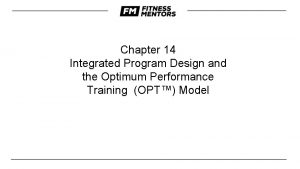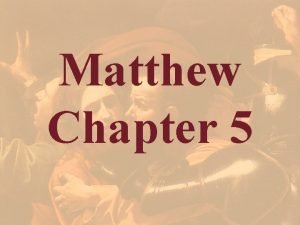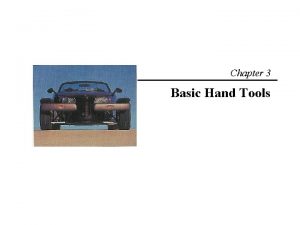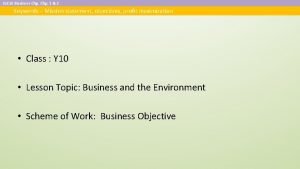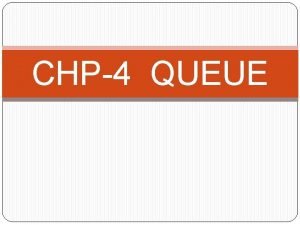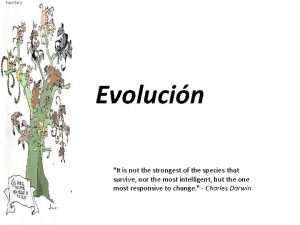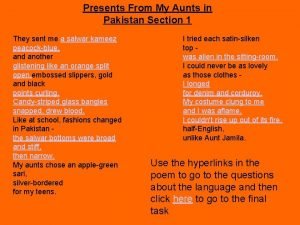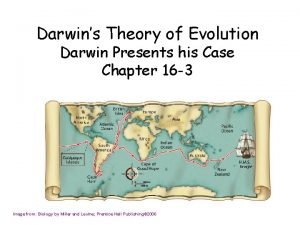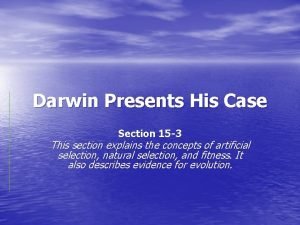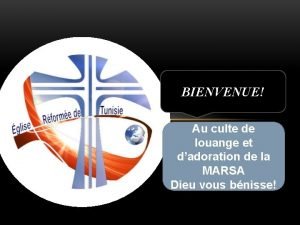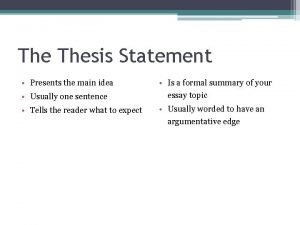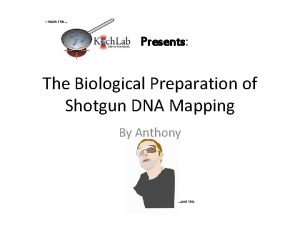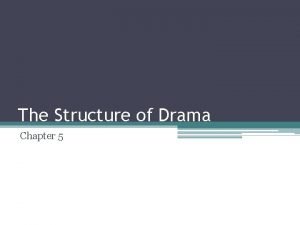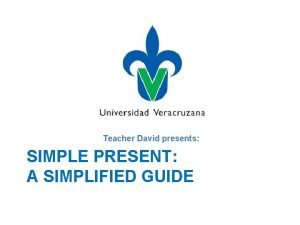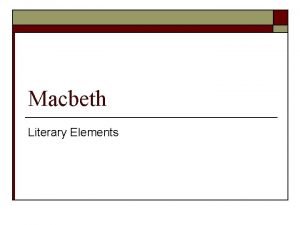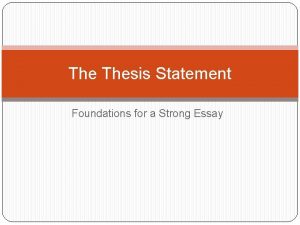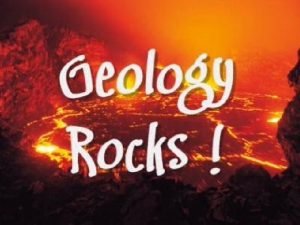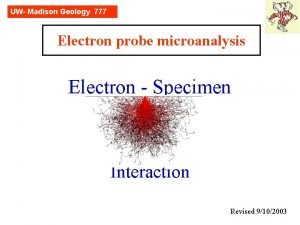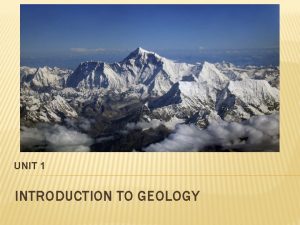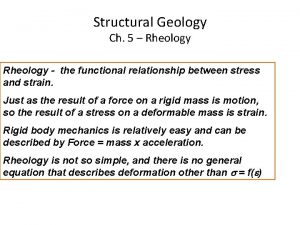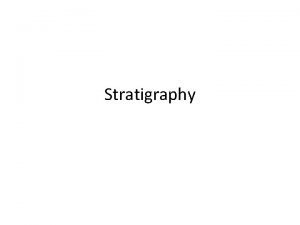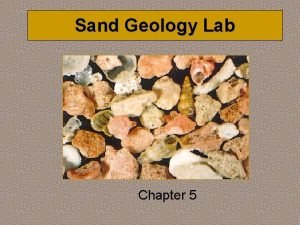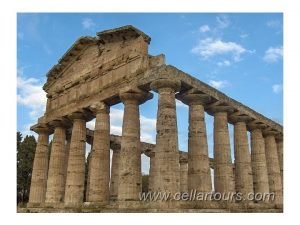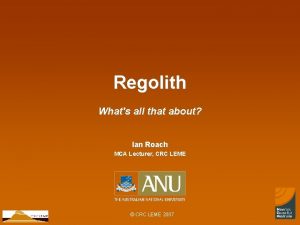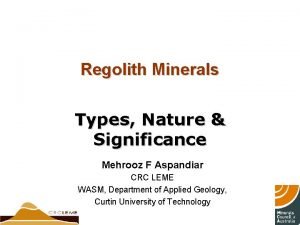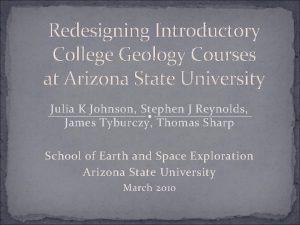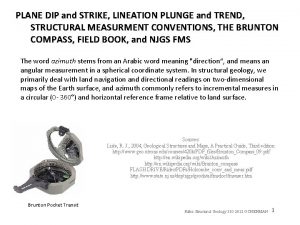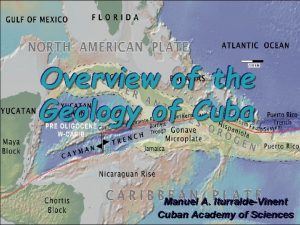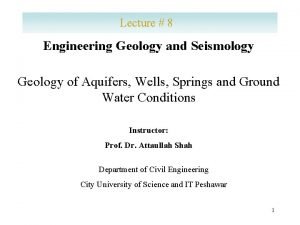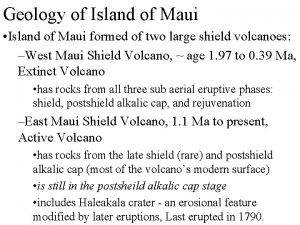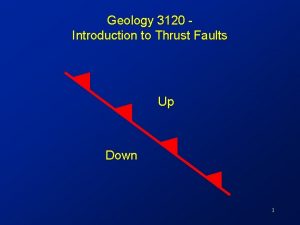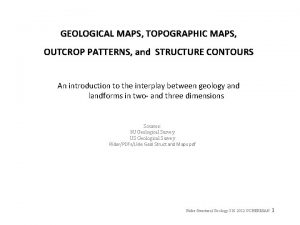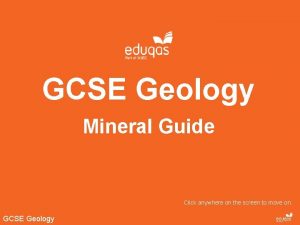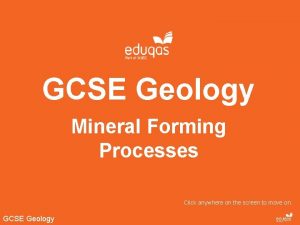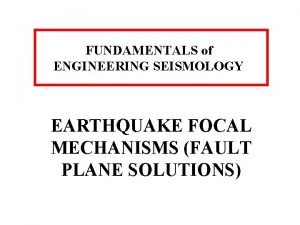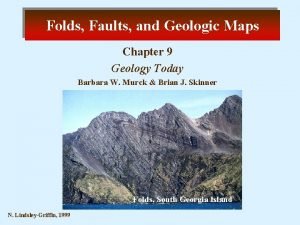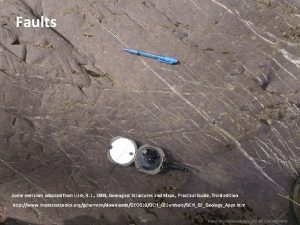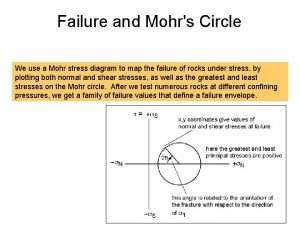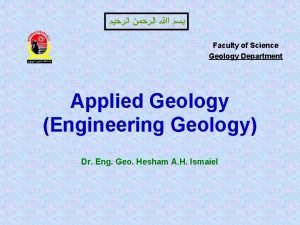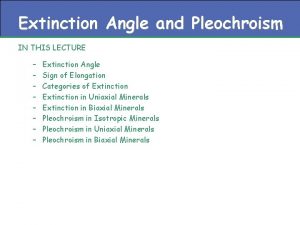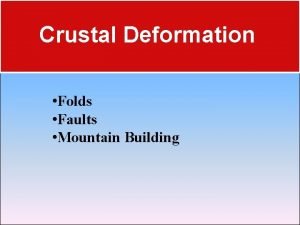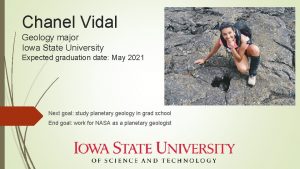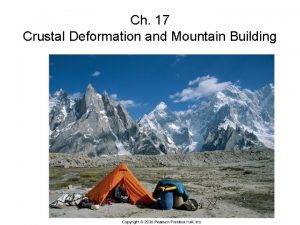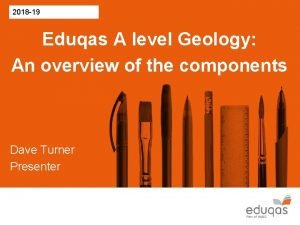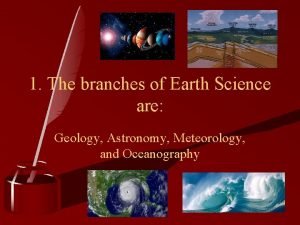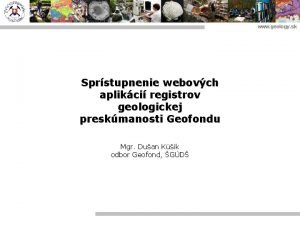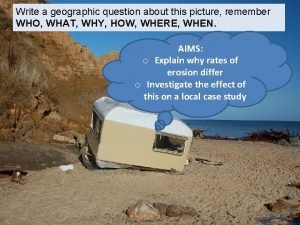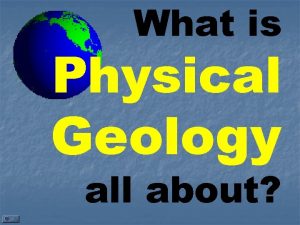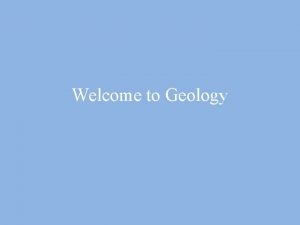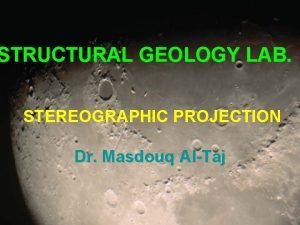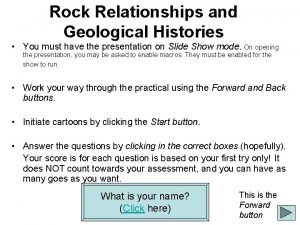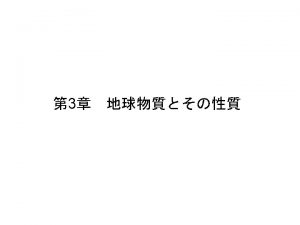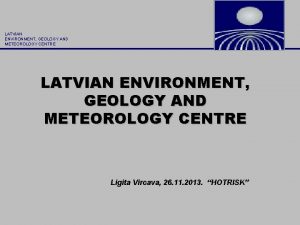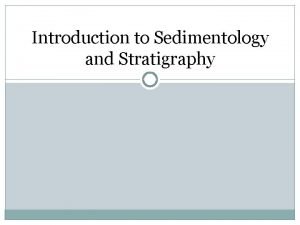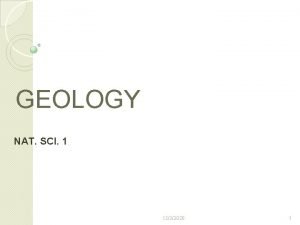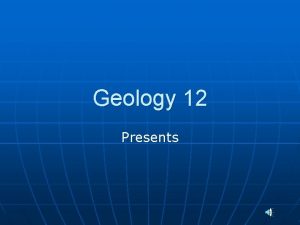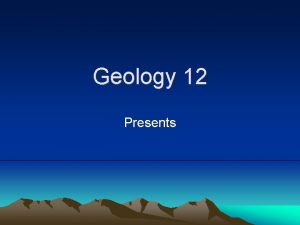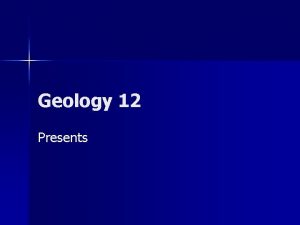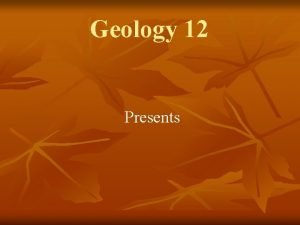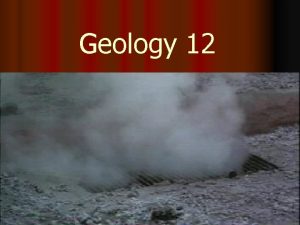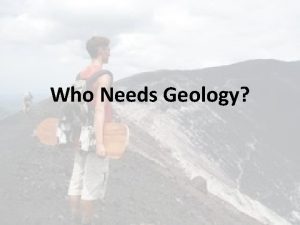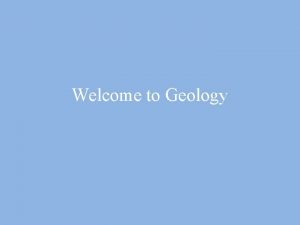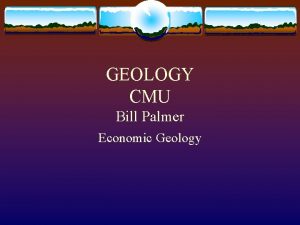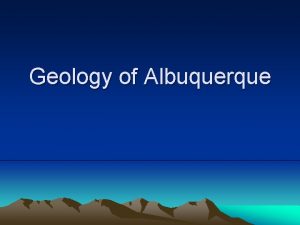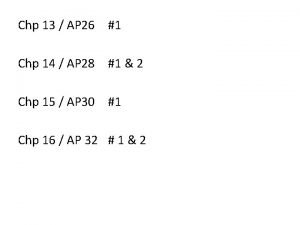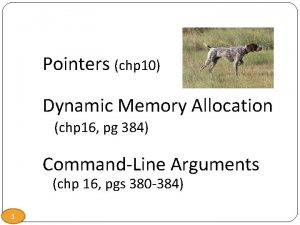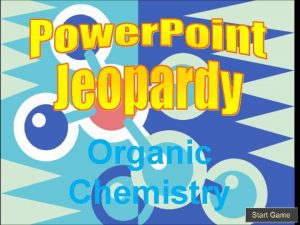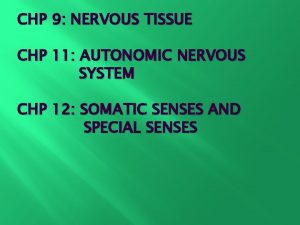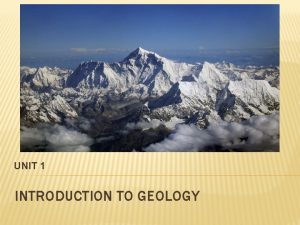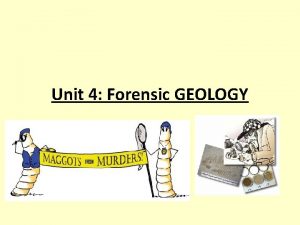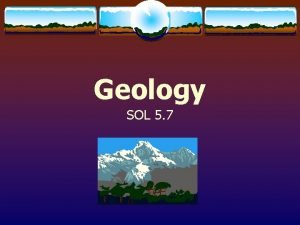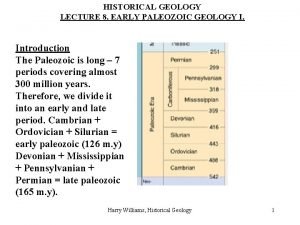Geology 12 Presents l Unit 3 l Chp

















































































- Slides: 81

Geology 12 Presents

l Unit 3 l Chp 10 Earth’s Interior l Chp 11 Ocean Floor l Chp 12 Plate Tectonics l Chp 9 Seismic (EQ) l Chp 13 Structure

Chp 12 Plate Tectonics • Theory is that Earth consists of about 18 -20 rigid lithospheric plates that move about the Earth’s surface on a plastic asthenosphere and mantle. • Lithosphere = crust + upper mantle (UM) • Lithospheric plates: – Cont’l: up to 250 km thick (crust 90 + UM 160) – Oceanic: up to 100 km thick (crust 10 + UM 90) • Move 2 – 20 cm/yr but average is 2 -3 cm/yr

Chp 12 Plate Tectonics

Major Plate Boundaries


Lithospheric Plates = crust + upper Mantle Up to 100 km thick Up to 250 km thick

Plates move 2 – 20 cm/yr but average is 2 – 3 cm/yr

Rate of Plate Movement

Evidence of Plate Tectonics • 1. Continental fit/jig-saw puzzle pieces


• 2. Similarity of Rocks and Mountains

• 3. Glacial Evidence: Glacial striations indicate movement of ice away from the pole

• 4. Fossil Evidence: same fresh water land fossils found on different continents

• 5. Paleomagnetism and Polar Wandering: plates moved N/S as given by magnetic inclination.


• 6. Seafloor Spreading: a 65, 000 km long volcanic mountain chain (ridge) in the oceans are where the sea floor splits and spreads apart. 5 pieces of evidence to support seafloor spreading to come

• As oceanic plates are driven apart by thermal convection cells/currents in the mantle, new oceanic crust forms in the rift. lithosphere mantle • New oceanic crust is created at the ridge; old oceanic crust is destroyed as it plunges down the trenches.

6. Evidence of Seafloor Spreading • a) GPS = Global Positioning Satellites in space give exact positions of continents; they tells us exactly how the plates are moving.

• b. Reversal of Earth’s Magnetic Field is recorded on the seafloor as iron-rich magma cools below the Curie Point to form pillow lavas and gabbro recording the Earth’s present magnetic field. animation

• b. Reversal of Earth’s Magnetic Field is recorded on the seafloor as iron-rich magma cools below the Curie Point to form pillow lavas and gabbro recording the Earth’s present magnetic field.

Q 60, p. 18 WS 12. 2


To find the middle of oceanic ridge, use the “dirty diaper” model Lab 12. 1 is next…it covers magnetic striping



• c. Radiometric Dating of Oceanic Plate: youngest at ridge; older as you move away old young old Oldest oceanic crust is 180 ma Oldest continental crust is 4, 000 ma (4 ba)

• c. Radiometric Dating of Oceanic Plate

c. Radiometric Dating of Oceanic Plate

d. Thickness of Sediments on Oceanic plates • Thinnest near the ridge; thicker as you move away Seamount Abyssal hill Abyssal plain

• d. Thickness of Sediments on Oceanic plates

e. Heat Flow Highest at Ridge: b/c i) Oceanic crust is thinnest at ridge = less insulation from hot interior ii) Oceanic crust is newly formed from molten rock = hot 4 3 2 Oceanic ridge Island arc (volcanoes) World average 1 0 trench old crust new crust

e. Heat Flow Highest at Ridge

Plate Boundaries


l Please hand out WS 12. 1 Note helper.

Plate Boundaries • A. Passive Margins: where oceanic and cont’l plates are fused and larges amount of sediment is deposited. Cont’l Margin Cont’l Shelf C ont’ l Slo pe Cont’l Ri se Abyssal Plain Oceanic Plate Cont’l Plate fused

Cont’l Margin Oceanic Plate Cont’l Plate fused • As oceanic plate becomes thicker, it becomes heavier, plus it gets pushed down with sediment. If/when this boundary becomes active, the sediment will be pushed into mtn’s. i. e. like the Rockies

Plate Boundaries • A. Passive Margins

Plate Boundaries • B. Active Margins: where plates are moving away (#1: plate is being created), towards (#2: plate is being destroyed), or past each other (#3)

1. Divergent Boundaries/Spreading Ridge Crust is pulled apart by convecting mantle, thins, breaks open, and magma (lower pressure lower melting temp’) wells up to form sheeted dikes of gabbro, basalt and pillow lava. rift basalt gabbro mantle

• Also: – High heat flow – Basaltic/mafic lava – Shallow (& mild) EQs (<30 km) – Rugged topography (seamounts, basalt floods, pillow lava) – Starts off as • i) doming/crustal unwrap • ii) rift valley & basalt floods • iii) narrow sea (i. e. Red, Dead) as continents split up • iv) spreading ocean (i. e. Atlantic)

Plate Boundaries • B. Active Margins – 1. Divergent Boundaries


Triple Junctions


– 2. Convergent Boundaries = where 2 plates collide ove r a) oceanic-oceanic und er Accretionary Volcanic isld’ arc wedge Fore arc trench Back arc basin c u. m. asthenosphere crust Upper mantle

• Magma melting temperature lowered by water • Deepest trenches (11 km) because both plates are heavy (3. 0 gm/cm 3) • Andestic magma

• 2. Convergent Boundaries • a) Oceanic-oceanic Fore arc basin Accretionary Complex Back arc basin Volcanic arc

• Driving Force on oceanic plate is: i) pushed/dragged by convecting mantle = “ridge push”: ii) Pulled by sinking oceanic slab in mantle = “slab-pull”: • Deep EQs (100 - 700 km) • Ex: Aleutian Islds, Japan, Taiwan, Philippines, New Zealand, Caribbean Islds.

lca nic sin c ba e ar For Vo B k c a c r a b arc in s a

“Ridge Push – Slab Pull”

• Sediment is scraped off descending ocean floor to form: accretionary wedge = melange = subduction complex (mainly deep sea sediments/shale + pillow lavas) WA OR CA

Melange Fore arc basin Volcanic arc

b) Oceanic-continental Volcanic arc Accretionary wedge Fore arc basin trench O. C. U. M. asthenosphere Folded mtn’s Back arc basin Cont’l crust Upper mantle

• Magma melting temperature lowered by water • Andestic magma • Driving force on oceanic plate is: – i) pushed/dragged by convecting mantle – ii) pulled by sinking oceanic slab in mantle • Deep EQs: up top 700 km • Ex: Nazca and S. American Plates

b) Oceanic-continental

b) Oceanic-continental Folded Fore arc Mountains basin Back arc basin Accretionary Volcanoes Complex

• If an oceanic – continental subduction continues … it will result in: Passive margin Active margin Cont’l crust O. C. U. M. Upper mantle asthenosphere Cont’l crust U. M O. . C. asthenosphere Upper mantle

c) continental - continental Deformed & metamorphosed accretionary wedge Mtn’ range Cont’l crust Upper mantle asthenosphere Ex: Himalayas, Alps, Urals Cont’l crust oc ea U. M. nic cr us t

c) Continental-continental

2. Convergent Boundaries c) Continental-continental

3. Transform Boundary RH LH • Where plates slide past each other • Mainly associated with divergent boundaries Transform boundary RH • Shallow EQs <30 km

• 3. Transform Boundary LH

Transform Faults

LH

BC Coast Tectonic Scenario

Juan de Fuca plate Pacific plate North American plate Gorda Plate

l Note helper ends l Please use your note book now.

Interplate setting: • Continental: during the Paleozoic (570 – 245 ma) and Mesozoic (245 – 66 ma), inland seas covered most of the continents, except mountains, so it ranged from swampy (i. e. ferns – coal at the edges of the seas in W. Alberta & Pennsylvannia, Kentucky) to inland shallow marine seas (Devonian reefs from Alberta to Texas)

Interplate Setting

Paleozoic 300 my North America

• Mesozoic 100 my • North America

• Cenozoic (66 ma) to present, it has been mainly erosion of the continents and sedimentation on the margins. • Oceanic setting: plates are very new, largely 2 major events occuring in the middle of the plates: – i) sedimentation (clays and ooze) – ii) hot spot volcanism (Hawaii-Emperior chain) give absolute plate velocity.

• Wilson Cycle is 500 ma period where the Atlantic Ocean opens and closes, and continents split apart and collide to form supercontinents, over and over again. 3 times at least: Pangea: 275 my Rodinia: 1000 my Columbia: 1800 my

Pangea: 275 my

Rodinia: 1000 my

Columbia: 1800 my

• 0 – 100 ma: “supercontinent” insulates mantle; heat builds creating diverging convection cells. • 100 – 300 ma: rifting and creation of new ocean basin. New continents separated by widening ocean basin. • 300 – 500 ma: oceanic crust becomes thicker, heavier, & sinks at passive margin becoming an active margin – subduction bdy’; continents come back together, collide and create high mtn’ chain.


• Do WS 12. 2
 Chp bit inspection
Chp bit inspection Yenifer chp vr
Yenifer chp vr Market research igcse
Market research igcse Integrated program design
Integrated program design Matthew 5
Matthew 5 Basic hand tools
Basic hand tools Vision statement keywords
Vision statement keywords Double ended queue
Double ended queue Chp 14
Chp 14 Chp dre
Chp dre Seleccion disruptiva
Seleccion disruptiva Checed warwick apartments
Checed warwick apartments Cause and effect signal words
Cause and effect signal words Presents from my aunt in pakistan
Presents from my aunt in pakistan Presents from my aunts in pakistan
Presents from my aunts in pakistan Sally elatta presents on business agility
Sally elatta presents on business agility 16 3 darwin presents his case answer key
16 3 darwin presents his case answer key Section 15-3 darwin presents his case answers
Section 15-3 darwin presents his case answers Sats word problems
Sats word problems Sue palmer writing skeletons
Sue palmer writing skeletons Zids and zods answers
Zids and zods answers Prose writing that presents and explains ideas
Prose writing that presents and explains ideas What is nonfiction prose
What is nonfiction prose Gurmit paid £21 for five presents
Gurmit paid £21 for five presents Where does “snowflake girl” help to deliver presents
Where does “snowflake girl” help to deliver presents Bienvenue au culte d'adoration
Bienvenue au culte d'adoration Which statement presents the main idea of the text?
Which statement presents the main idea of the text? A 26 year old female presents
A 26 year old female presents This presents
This presents What is a tragedy
What is a tragedy What is the structure of drama
What is the structure of drama Sue palmer discussion book
Sue palmer discussion book Presents simple
Presents simple Is the way an author presents a character.
Is the way an author presents a character. Poster is a type of communication
Poster is a type of communication A thesis statement presents
A thesis statement presents Which sentence presents a faulty either/or argument?
Which sentence presents a faulty either/or argument? Chapter 17 neurologic emergencies
Chapter 17 neurologic emergencies Unit 10, unit 10 review tests, unit 10 general test
Unit 10, unit 10 review tests, unit 10 general test Xvfk
Xvfk Geology
Geology Geology what is
Geology what is Geology
Geology What is stratigraphy?
What is stratigraphy? Geology lecture series
Geology lecture series Geology grain size card
Geology grain size card 3 types of differential stress
3 types of differential stress What is regolith in soil
What is regolith in soil Mineral council australia
Mineral council australia Arizona state university geology
Arizona state university geology How to write trend and plunge
How to write trend and plunge Geology of cuba:
Geology of cuba: Confined and unconfined aquifer
Confined and unconfined aquifer Geology of maui
Geology of maui Thrust geology
Thrust geology Rule of v's structural geology
Rule of v's structural geology Gcse geology data sheet
Gcse geology data sheet Gcse geology
Gcse geology Beach ball seismology
Beach ball seismology Osk
Osk Structural geology practical exercises
Structural geology practical exercises Confining pressure mohr circle
Confining pressure mohr circle Geology earth science definition
Geology earth science definition Types of extinction angle
Types of extinction angle Geology earth science definition
Geology earth science definition Zone of aeration
Zone of aeration Department of geology university of dhaka
Department of geology university of dhaka Deformacion
Deformacion Iowa state geology
Iowa state geology Reverse fault
Reverse fault Eduqas a level geology past papers
Eduqas a level geology past papers Earth science branches
Earth science branches Www.geology.sk
Www.geology.sk Holderness coast geology map
Holderness coast geology map Define physical geology
Define physical geology Geology vocabulary
Geology vocabulary Orthographic projection geology
Orthographic projection geology Conformable contact geology
Conformable contact geology Prem earth model
Prem earth model Latvian environment geology and meteorology centre
Latvian environment geology and meteorology centre What are sediments?
What are sediments? Geology definition
Geology definition



